What Hi-Fi? Verdict
Although it’s labour intensive and occasionally lets colours slip, the LS12000B is overall a fantastically cinematic projector for its money
Pros
- +
Fantastically bright HDR pictures
- +
Lovely filmic feel
- +
4K/120 HDR gaming support
Cons
- -
Dark HDR colours can look unrefined
- -
Really unhelpful menu system
- -
Some strange preset decisions
Why you can trust What Hi-Fi?
Depending on how this review goes, the Epson EH-LS12000B arrives on our test benches at either a very apposite or a very unfortunate moment.
After all, it’s a 4K (kinda) laser projector aimed at serious home cinema fans that costs less than you might expect given its level of specification – which makes it sound mighty similar to the seriously impressive but also surprisingly affordable Sony VPL-XW5000ES we reviewed only a few days ago. If the Epson can hold its own against that ground-breaking Sony, then, happy days. But if it can’t…
Price
While the Epson EH-LS12000B and Sony VPL-XW5000ES laser projectors are probably each other’s biggest rivals right now, they’re not in totally the same price ballpark. The EH-LS12000B’s £4500 / $4999 / AU$8999 price undercuts that of its new Sony XW5000ES rival by a tidy sum – around £1500 in the UK, $1000 in the US, and $1000 in Australia, in fact. Those differences add up to a pretty big pile of 4K Blu-ray discs or a tidy external audio system alongside the LS12000B before you’ve spent up to what a Sony XW5000ES costs.
Sony’s latest entry-level 4K laser projector, though, boasts arguably the finest image processing system in the projector world and a genuine rather than ‘sort of’ 4K resolution. So the LS12000B’s job is to get close enough to the Sony’s performance to justify its price, while also out-gunning the new wave of less ambitious pseudo-4K laser projectors we’re starting to see creeping in below £3000 / $3000 / AU$7000 or so.
Design
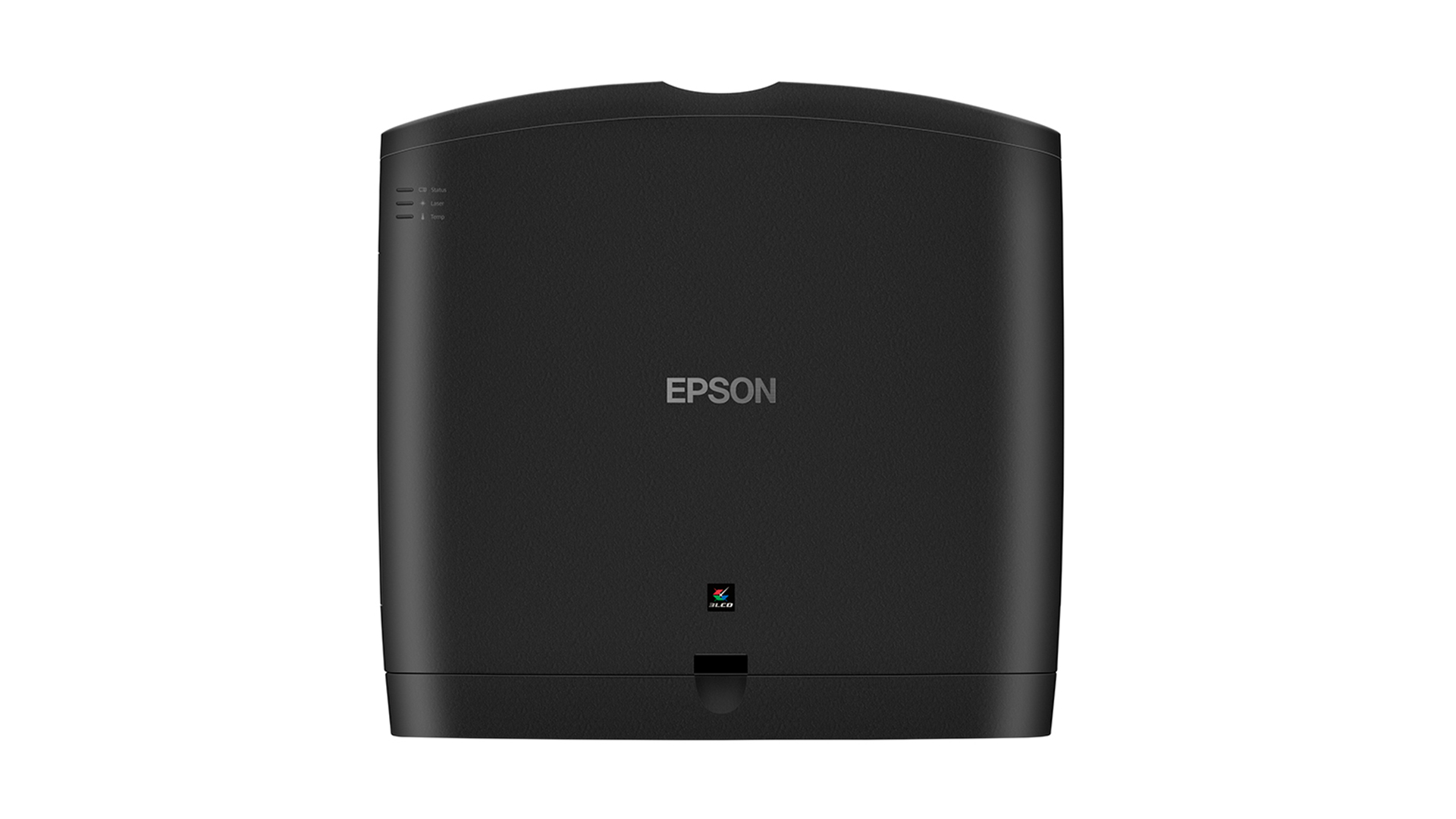
The EH-LS12000B is a well built, hefty and substantial bit of home entertainment kit. As we’ve come to expect from laser projectors with serious home cinema intent, its footprint is larger than most coffee tables would be comfortable with, pointing you towards the fact that a projector such as this should be permanently installed in a dedicated home cinema room. It’s not one of those casual projectors that will be kept in a cupboard when it’s not being used.
It wears its bulk quite tidily, though, thanks to an unusual textured black finish wrapped around a body that rounds-off pretty much any sharp edges.
An imposing and promisingly large lens sits at the centre of the front edge, protected when the projector is switched off behind a pair of automatic sliding doors. Tucked into the ‘wings’ of the front edge, meanwhile, are a pair of serious-looking vents that look as though they have the potential to keep heat from the laser lighting under control without, hopefully, cooling fans having to run too loudly.
Features

The Epson EH-LS12000B’s main claim to fame is its ability to play 4K in high dynamic range using laser lighting at a price point that would not so long ago have been unthinkably low for a model so clearly aimed at home cinema enthusiasts. So let’s look a bit more closely at these headline grabbing features.
First up, it isn’t truly 4K in the same way that Sony’s XW5000ES is. The three LCD imaging devices the LS12000B uses to create its pictures don’t actually carry 3840x2160 pixels each, but rather they’re Full HD chips that use ‘advanced pixel shifting’ technology to create a 4K pixel density.
This doesn’t mean the LS12000B might not be capable of delivering very sharp and detailed pictures that look higher in resolution than HD, but experience suggests the results will not be a detail and sharpness match for the XW5000ES’s native 4K pixel count.
The High Dynamic Range support impressively includes HDR10+ as well as the more usual HDR10 and HLG formats. It doesn’t stretch to Dolby Vision as well, but finding any sort of ‘dynamic’ HDR format support on a projector counts as a win.
The LS12000B’s HDR efforts should be helped along nicely, too, by a claimed peak brightness of 2700 lumens. That’s far higher, in fact, than the 2000 lumens claimed by Sony’s XW5000ES. Though we’ve seen enough projectors in our time to know that it’s not just how many lumens you’ve got that counts; it’s what you do with them.
The laser lighting, meanwhile, delivers the familiar benefit of a 20,000 claimed hours of use before it dies versus the 3000-6000 hours of life, maximum, you get from typical projector lamps before you need to change them. It’s also true that the brightness and picture quality lasers give you over their life span will deteriorate much slower than they do with lamps.
Lasers support much faster on/off times than regular lamp projectors, and can deliver both more brightness and more colour range without impacting their lifespans than lamps can.
The Epson LS12000B carries a ZX picture processor, driving such features as 4K frame interpolation for smoother motion, a resolution enhancer, and a Scene Adaptive Gamma mode that’s the closest Epson’s projector gets to a (basic) dynamic tone mapping system, where processing analyses incoming HDR images to try and optimise their playback to the projector’s capabilities.
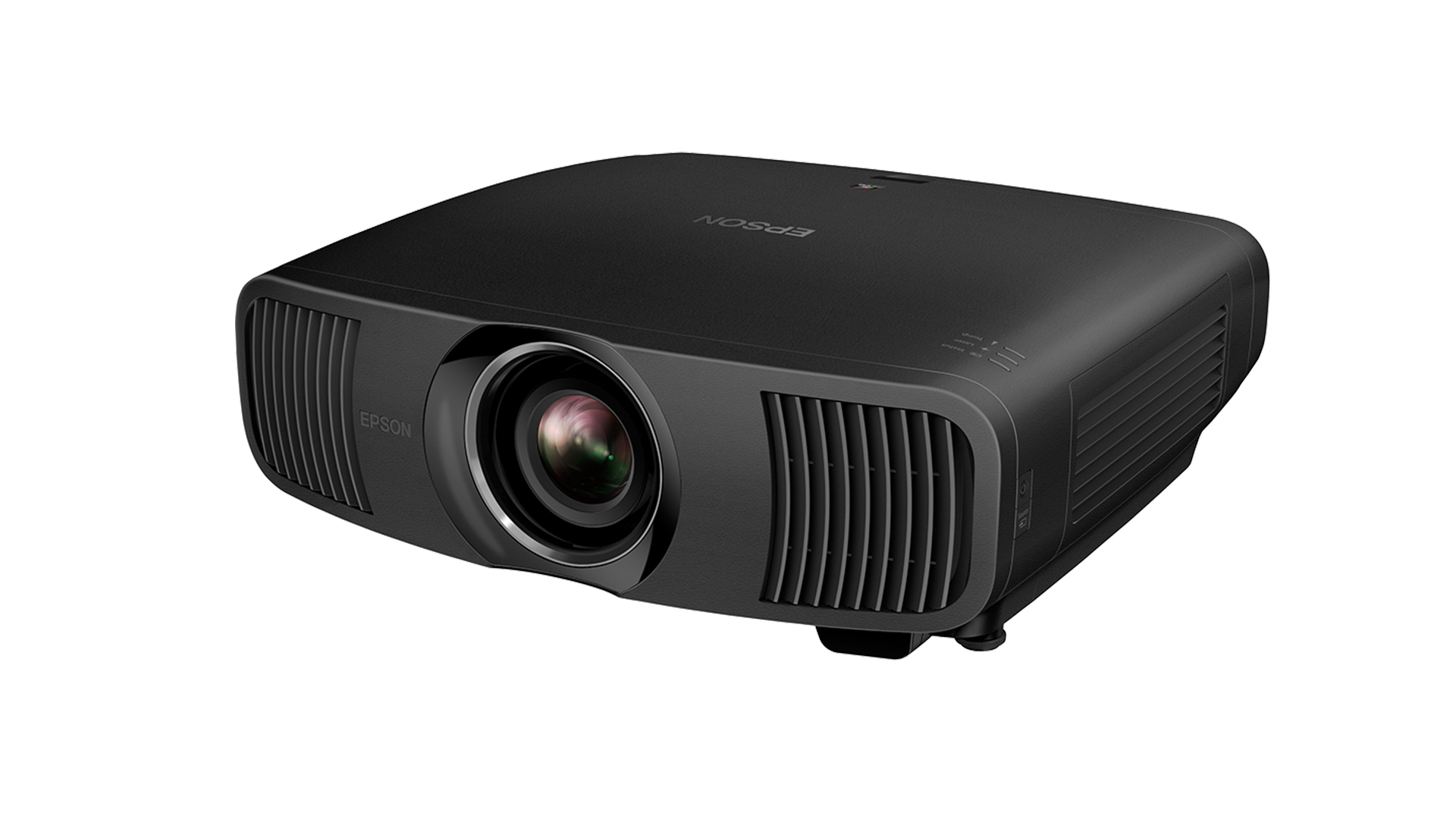
Display technology LCD laser
Resolution 4K (via e-shift)
Screen size Up to 300 inches
Input with 60Hz in game mode 38ms
Dimensions 19 x 52 x 45cm
The LS12000B’s claimed dynamic contrast ratio is a huge 2,500,000:1, and it sports full motorised lens adjustment – something that the more expensive XW5000ES does not. This includes extensive optical image shifting vertically and horizontally, and a very healthy x2.1 level of optical zoom.
Also unexpected but very welcome on the LS12000B’s features list is support over its HDMI ports for the 4K/120Hz video signals now available from the Xbox Series X, PS5 and high-end PCs. Such support remains quite rare in the gaming world – though it’s also worth mentioning that the LS12000B’s gaming chops don’t extend to a dedicated gaming picture preset, and its input lag with the quick-response Fast processing mode active is slightly high for premium gaming, at 38ms with 1080p/60Hz feeds.
The last tricks up the LS12000B’s sleeves are its support for calibration by an ISF engineer if you’re willing to pay for the privilege, and compatibility with the Calman calibration software.
While the LS12000B sports an impressive feature count overall, unfortunately its on-screen menu system is pretty horrible. It fills the screen with overwhelming amounts of text-only choices, and presents many of its features using non-standard, unfamiliar language and approaches. At times it feels as if Epson has almost wilfully tried to make fine tuning picture quality as confusing as possible.
Picture
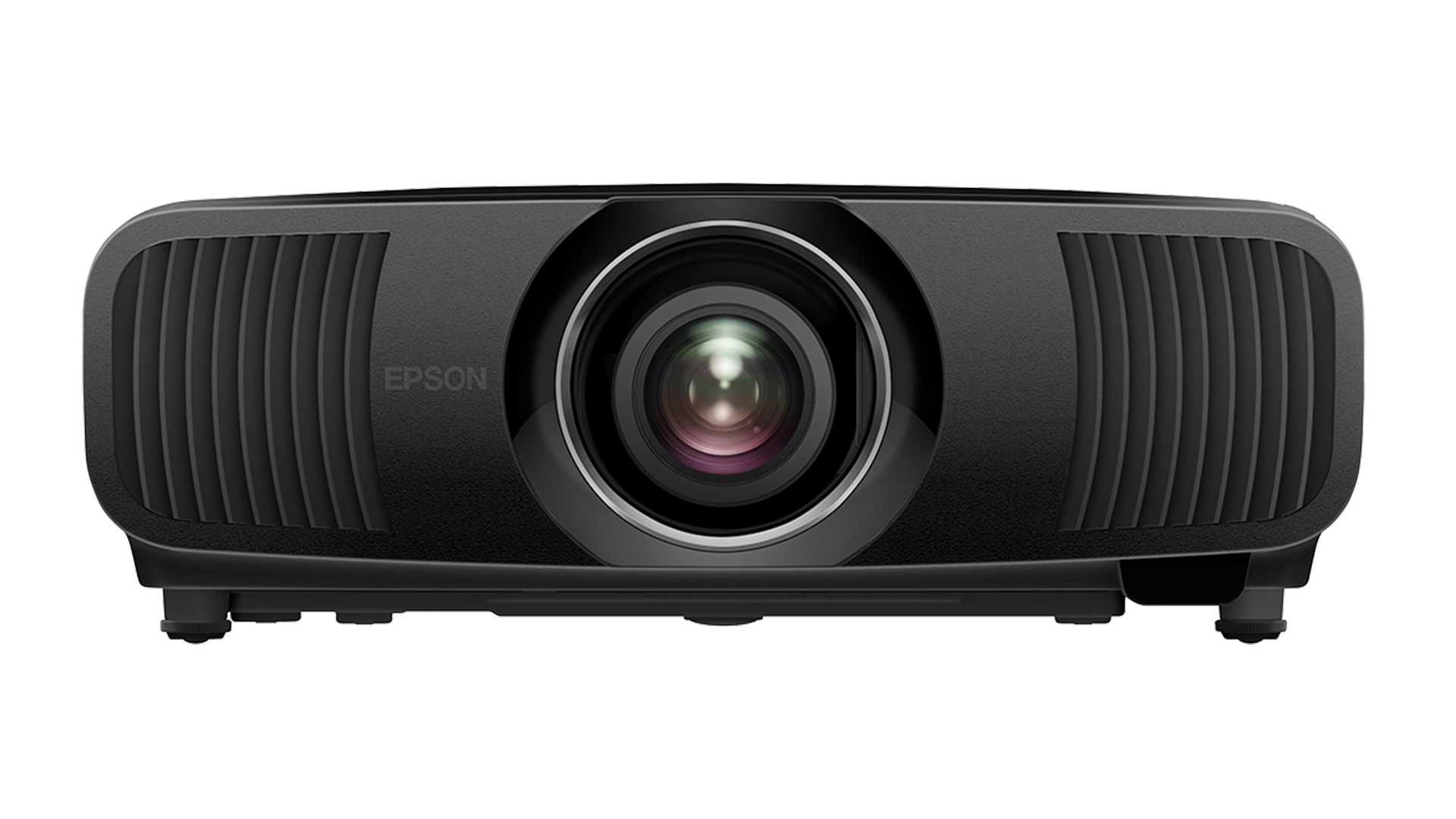
The Epson EH-LS12000B blasts out of the picture quality gates in spectacular fashion by delivering some of the brightest HDR pictures we’ve seen from a serious 4K laser home cinema projector costing less than five figures.
This is especially noticeable and enjoyable with HDR images that fill the whole screen with brightness. Such content benefits from much more of an HDR lift than we’re used to seeing with projectors that don’t cost silly money – especially as the high brightness is accompanied by a wider than common colour range that stops even the very brightest image areas from looking washed out.
The LS12000B doesn’t deploy an actual dedicated wide colour filter like one or two projectors we’ve seen over recent years. But its laser lighting system is refined enough to stretch colour beyond that of most regular projectors, even managing to retain convincing saturations if you set the provided Scene Adaptive Gamma setting to its highest level.
While the LS12000B’s black levels aren’t quite as deep and convincing as those of the Sony XW5000ES, they’re still good by the standards of the laser projection world generally. What’s more, these respectable black levels are created against a backdrop of substantially more brightness than the Sony provides. So there are times – many of them – where the level of impact and sense of contrast is actually higher from the LS12000B than it is from the more expensive Sony. Even though Sony’s tone mapping system is more sophisticated than the LS12000B’s.
The LS12000B’s handling of dark scenes does bring us into conflict with the projector’s sometimes unhelpful out of the box settings, though. If you use the Cinema preset you’d reasonably expect to be the best for movie nights, dark scenes/picture areas are affected by noticeable ‘black crush’, where subtle details are lost in the darkness.
Switching to the Bright Cinema preset largely fixes this issue – and, actually, a few other niggles too. Its much higher brightness plays better with HDR than the rather gloomy looking Cinema mode, for instance. It also turns out that the LS12000B’s colour performance is much more convincing and nuanced when the projector is running at the sort of brightness level introduced by the Bright Cinema mode.
In fact, our main gripe with the LS12000B is that colours can start to appear both off key and prone to strange clouding and banding effects when the projector is running in its Cinema preset. Unfortunately we’ve come across a relatively dark HDR title or two – most notably Blade Runner 2049 on 4K Blu-ray – where the LS12000B’s colour issues creep in from time to time even in Bright Cinema mode. For the vast majority of the time, though, and with the vast majority of movies, the Bright Cinema mode’s combination of high brightness and natural, nuanced colours looks absolutely lovely.
It’s worth adding here that the LS12000B’s use of an LCD rather than the more common DLP projector system means that it’s immune to the latter’s ‘rainbow effect’, where pure colour stripes flicker over bright picture highlights.
The LS12000B doesn’t pull out quite as much subtle detail from either native 4K or HD sources as the Sony XW5000ES. However, as hoped, the picture does look denser and slightly more textured than we’d expect it to if we were watching a straight HD projector – so the LS12000B’s efforts to create a 4K image certainly haven’t been in vain. Nor do they lead to any obvious unwanted side effects.
The LS12000B’s motion processing is not as good as the True Cinema mode provided on Sony’s XW5000ES. Epson’s efforts can leave the image looking a little too smooth to still feel cinematic, and can cause a few blurring, smearing and double imaging side effects to boot. Fortunately the LS12000B handles motion decently well with its motion processing turned off – but if you’re someone who finds 24p judder on home displays particularly difficult to live with, you need to know that the LS12000B doesn’t have a very convincing back up plan.
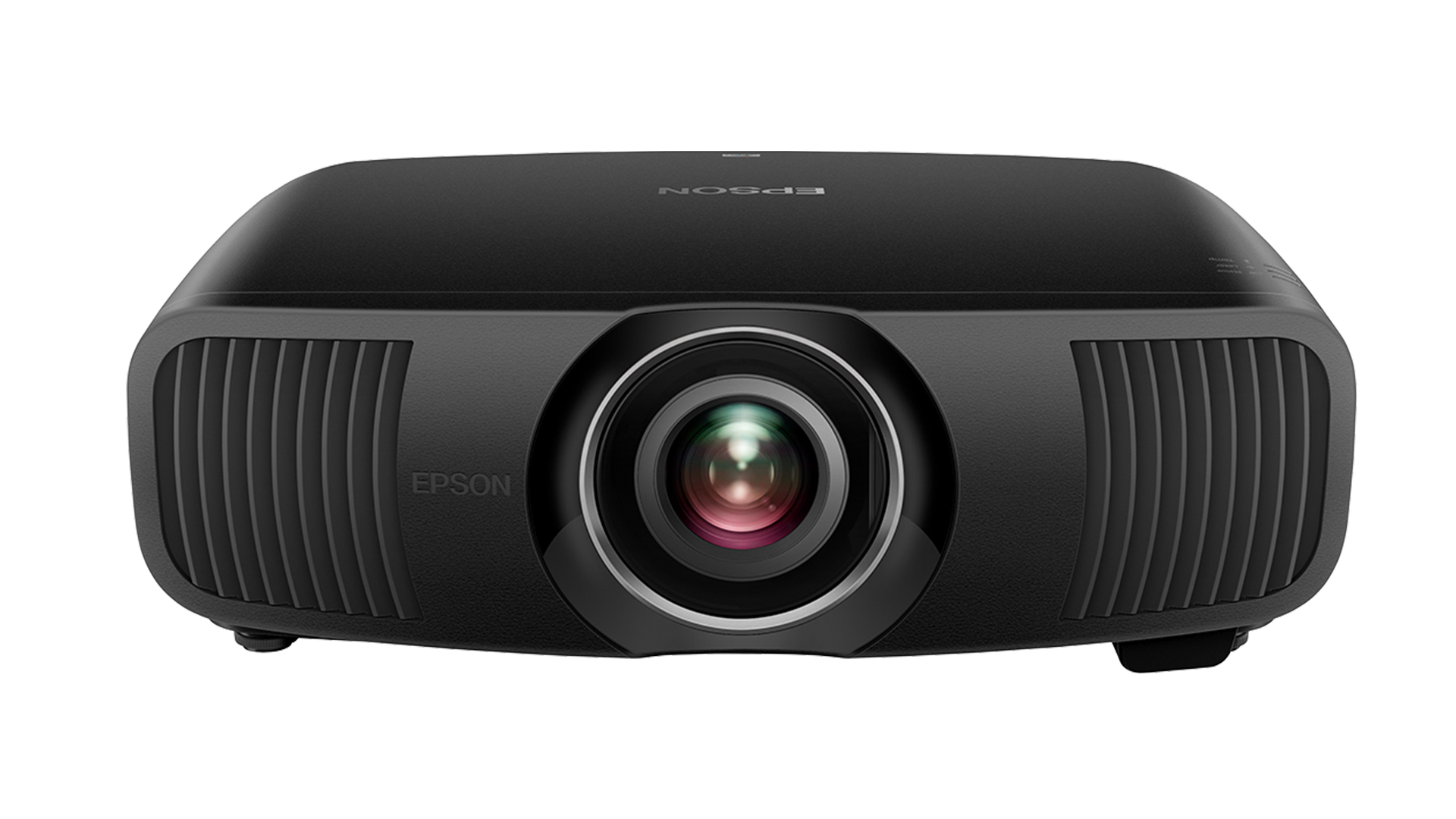
Sticking with issues connected with the LS12000B’s rather hit and miss picture tweak options, there’s also something strange going on with the projector’s Light Output adjustment. This lets you increase or reduce the laser light output in 5 per cent increments, and for the most part it’s a handy feature to have. The odd thing, though, is that Epson appears to have used the Light Output feature’s relationship with the projector’s fan noise – rather than pure picture quality considerations – as a key factor in determining its different picture presets.
So for instance, the Cinema preset sets the Light Output to its 50 per cent level, where the LS12000B’s fan noise is practically non-existent. Nudge Light Output up to 55 per cent and you can immediately hear the fan noise increase, to a level that then stays constant as you increase Light Output right up to the feature’s 75 per cent level. Similarly, the Bright Cinema preset chooses the 75 per cent Light Output level, seemingly because nudging this up to 80 per cent again leads to a noticeable increase in fan noise that then, again, remains constant all the way up to 100 per cent.
For us, the fan noise is low enough not to become a significant distraction even at its highest level, so we struggle to understand Epson’s apparent obsession with it. Especially when both the Cinema and Bright Cinema presets clearly deliver superior picture quality if you nudge the light output up from their apparently fan noise-based preset levels.
There are other setting issues to consider/work around, too. While it’s tempting to push the Scene Adaptive Gamma level towards its top end for the extra punch it gives HDR images, it can also significantly increase colour banding and blocking artefacts, especially in really bright image areas. The Bright Cinema preset can inject a little blueness into dark scenes that isn’t there in Cinema mode, meanwhile, so you may want to try and reduce this (though you can’t get rid of it completely without impacting the wider image’s colour balance too much for comfort).
You’ll also likely want to turn off the projector’s noise reduction systems with most good quality content, as well as fiddling with the so-called Fine Line and Soft Focus Detail settings.
Epson has gone to the trouble of allowing you to set up to six user presets for this latter group of fine tuning features – but while this sounds potentially helpful on paper, in the real world it just feels like another unnecessary over-complication of the LS12000B’s already messy set-up menus.
At which point we need to stress that while the LS12000B isn’t the easiest projector to optimise, most of the foibles we’ve been talking about are fixable or at least significantly improvable with a little judicious tweaking. In fact, the only reason we’ve gone into so much detail about its set-up niggles is that the projector is capable of looking so good that we’d hate people who buy one not to enjoy it running at its best.
Verdict
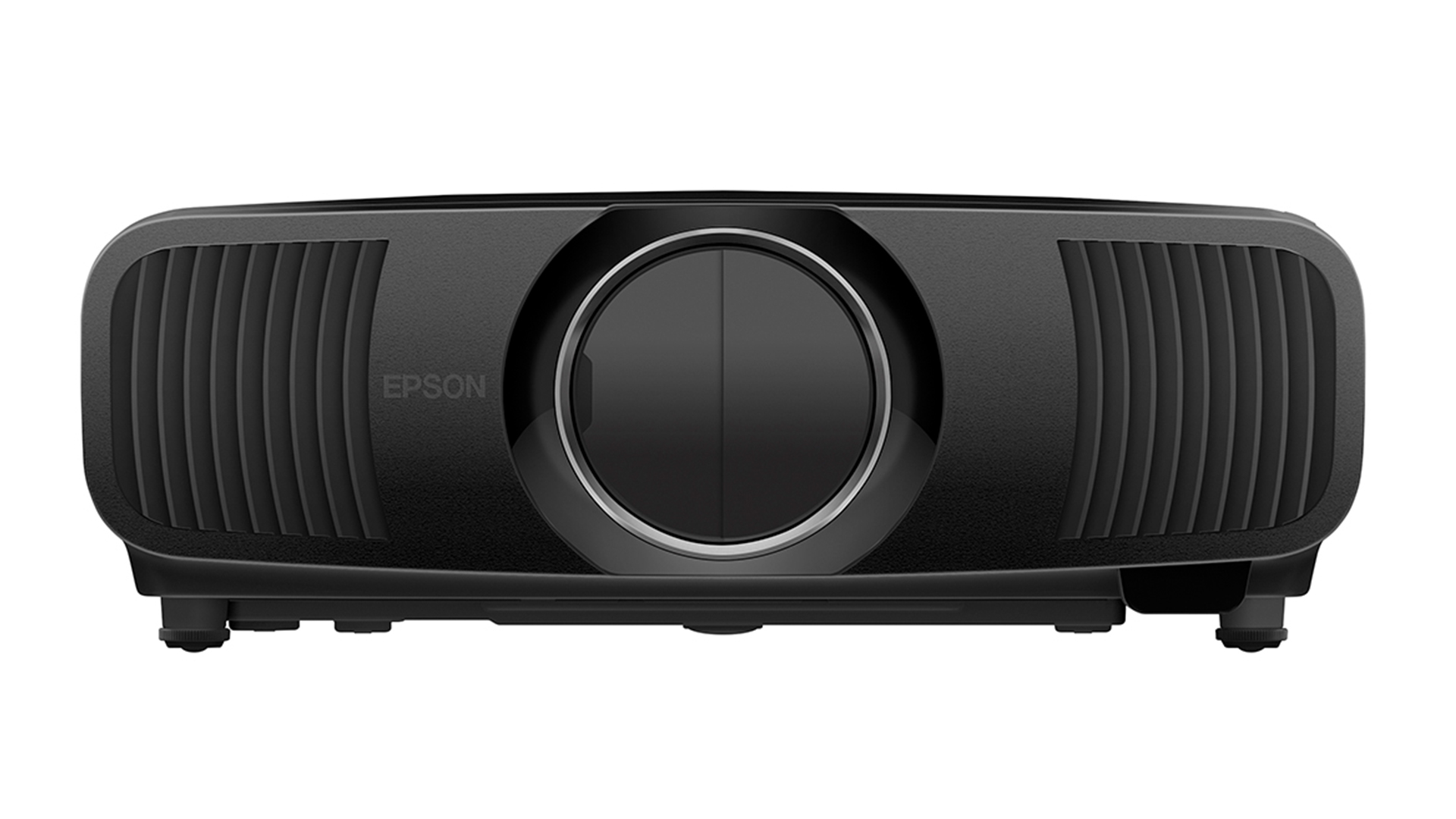
Some AV fans may well consider that what the extra brightness the LS12000B can achieve with HDR content over the Sony XW5000ES makes it a more all-round enjoyable watch. The Sony’s picture processing, though, is clearly better in a number of areas, especially when it comes to motion and generating a wider light range with HDR images (as opposed to delivering a higher baseline brightness with a narrower range of light). The Sony’s colour performance is more refined and consistent too, and you can clearly see the advantages of its ‘true’ 4K resolution.
As we said at the beginning of this review, though, the Epson LS12000B’s job is to get close enough to the Sony XW5000ES to justify its cheaper price, while also outperforming the latest influx of cheaper ‘mainstream’ 4K laser wannabes. And in both these respects it succeeds brilliantly, delivering in the process some of the most straight-up enjoyable HDR pictures we’ve seen from any projector to date.
SCORES
- Picture 5
- Build 5
- Features 5
MORE:
Read our review of the Sony VPL-XW5000ES
Also consider Samsung's The Premiere LSP9T
Read our Optoma UHZ50 review
What Hi-Fi?, founded in 1976, is the world's leading independent guide to buying and owning hi-fi and home entertainment products. Our comprehensive tests help you buy the very best for your money, with our advice sections giving you step-by-step information on how to get even more from your music and movies. Everything is tested by our dedicated team of in-house reviewers in our custom-built test rooms in London, Reading and Bath. Our coveted five-star rating and Awards are recognised all over the world as the ultimate seal of approval, so you can buy with absolute confidence.

